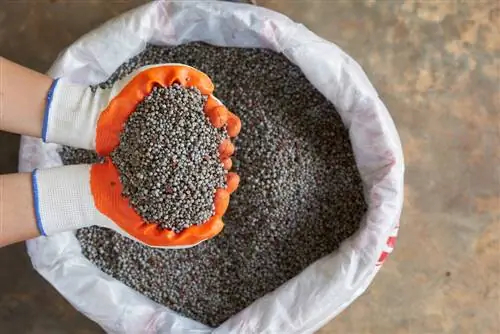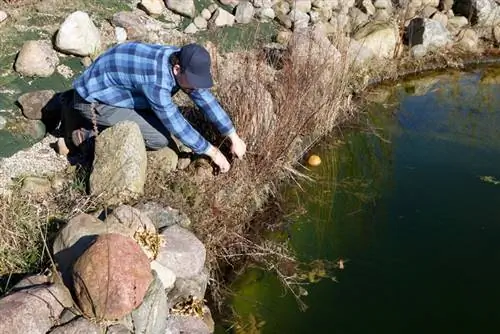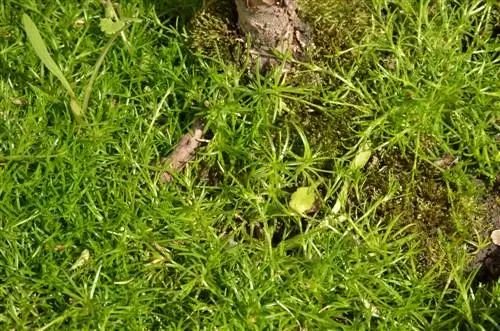- Author admin [email protected].
- Public 2023-12-16 16:46.
- Last modified 2025-01-23 11:22.
If you have a grub infestation in your private garden, you can use a few control methods. However, for the sake of the environment and your he alth, chemical agents should only be used in extreme cases. Lime nitrogen, which is officially approved as a fertilizer, is also not entirely uncritical.

Can you use calcium carbonate to combat grubs?
Limetic nitrogen can be used to control grubs, but caution is advised as the agent is also toxic to humans and can harm beneficial plants and animals. When using it, be sure to wear protective equipment and dose meticulously.
Backgrounds about calcium cyanamide
Lime nitrogen is the trade name of a fertilizer whose roots go back to before 1900. It is used primarily in agriculture, on the one hand as a nutrient supplement, but on the other hand also to combat weeds and pests. In the EU, however, calcium cyanamide is actually only permitted as a fertilizer. In specialist retailers it is mainly offered under the brand name “Perlka” and consists of the following components:
- Calcium cyanamide (almost 20%)
- Nitrates
- Lime (about 55%)
The nitrate serves as a direct nutrient for plants, as does the lime, whereby it also has a pH-stabilizing effect and promotes soil permeability. The calcium cyanamide is broken down by water and microorganisms into slaked lime and toxic cyanamide - the latter ensures the herbicidal and pest-fighting effect.
Problems of calcium cyanamide
Poisonous not only for unwanted things
The toxic cyanamide does not remain permanently in the soil. This is ensured by the microorganisms that turn it into harmless urea, nitrate and ammonium. However, they take around 2 weeks to completely break down - during this time not only pests and unwanted weeds are killed, but of course also all other germinating young plants and useful small animals. Application is therefore only recommended in empty beds in which you have discovered an underground grub infestation.
Correct dosage difficult
Application of lime nitrogen can also be very effective on lawns. On the one hand, the grass benefits greatly from the fertilizer effect. On the other hand, the product is particularly useful in preventing grubs, because May and June beetles prefer to lay their eggs on grassy areas due to the larvae's preference for grass roots. However, the correct dosage is not entirely trivial here. If the dosage is not meticulously applied professionally, over-fertilization burns can quickly occur.
Your own he alth is not safe
Limetic nitrogen is also toxic to humans and therefore requires very careful handling. Be sure to follow the usage instructions carefully. Protective gloves must be worn and a face mask is also recommended. Inhaling calcium cyanamide dust is particularly dangerous. Finely powdered substrates are therefore no longer sold.






